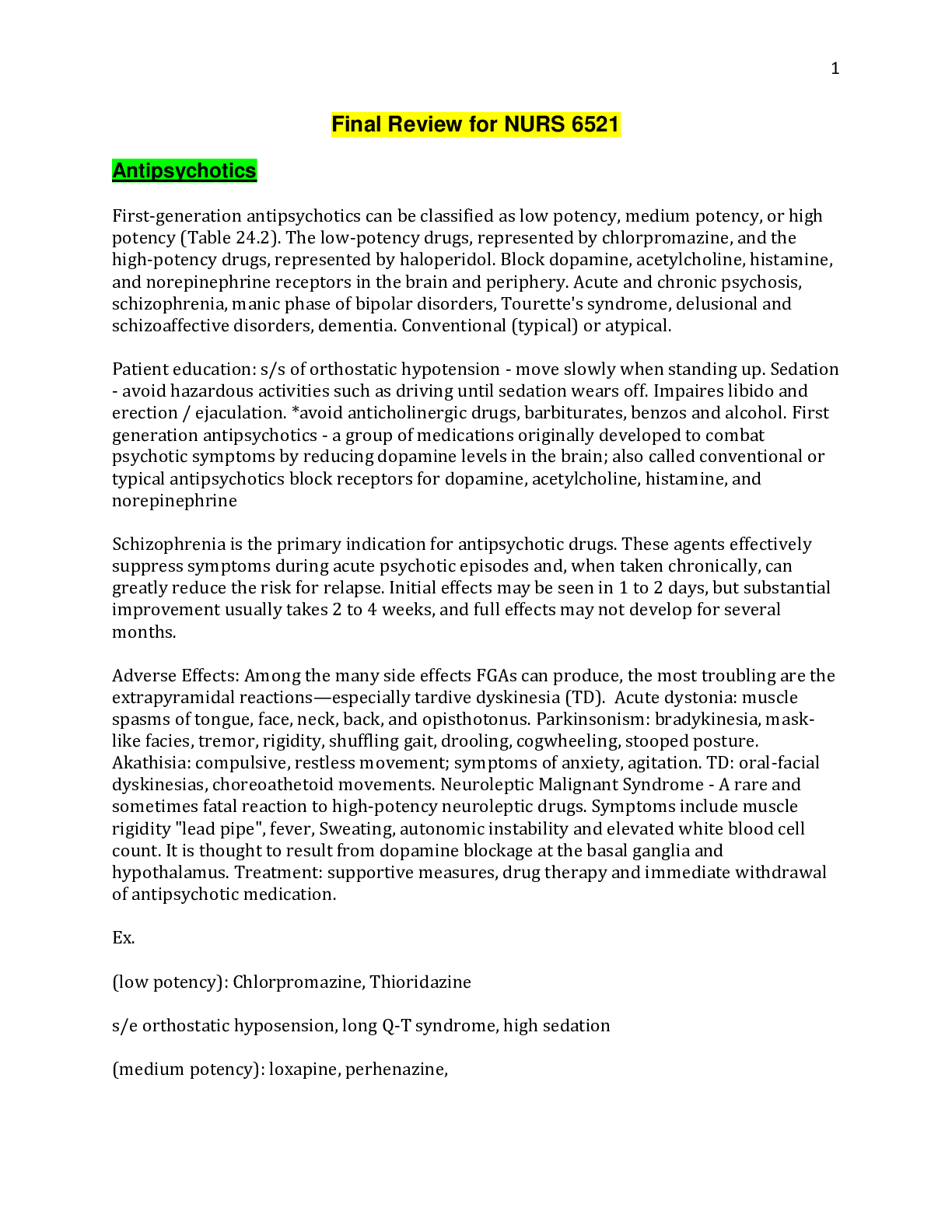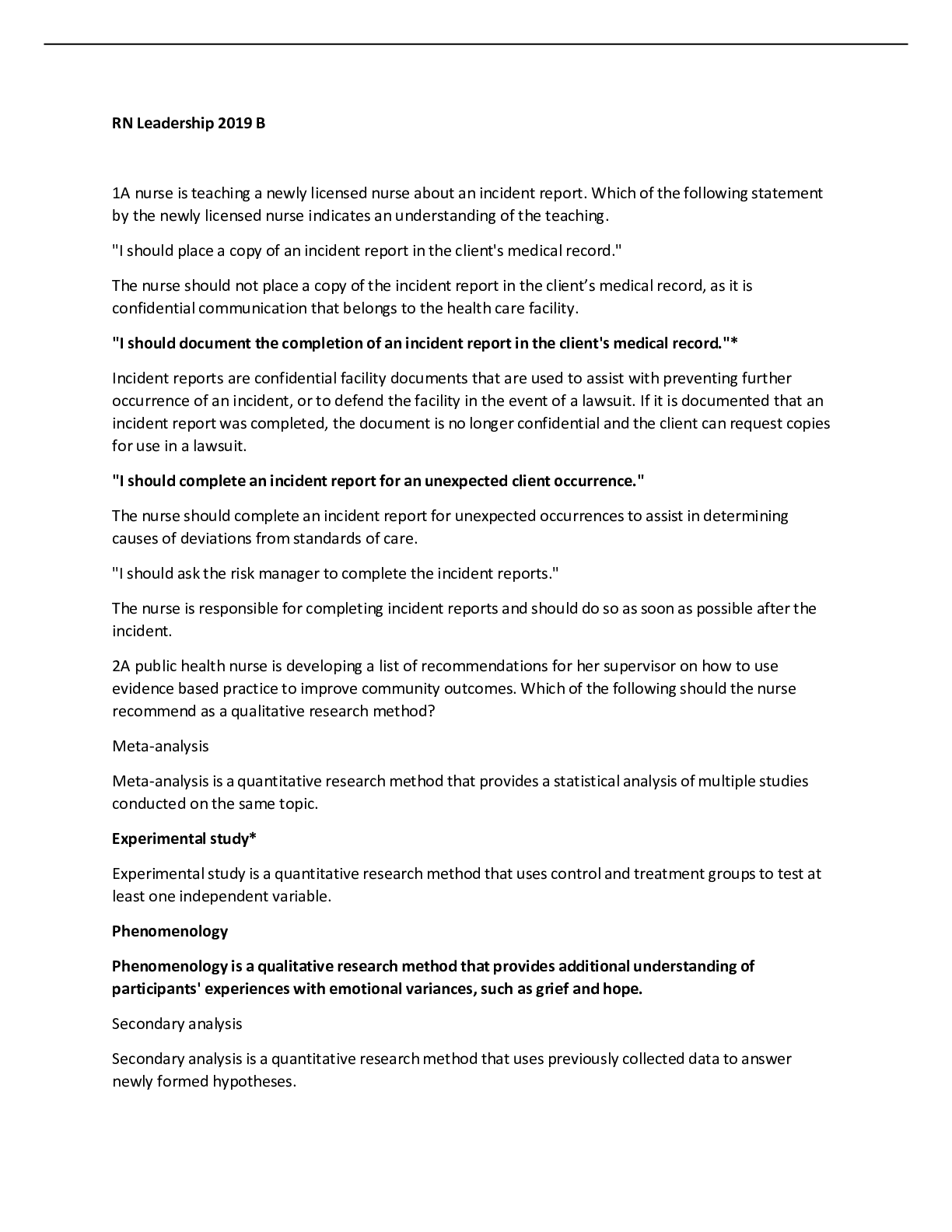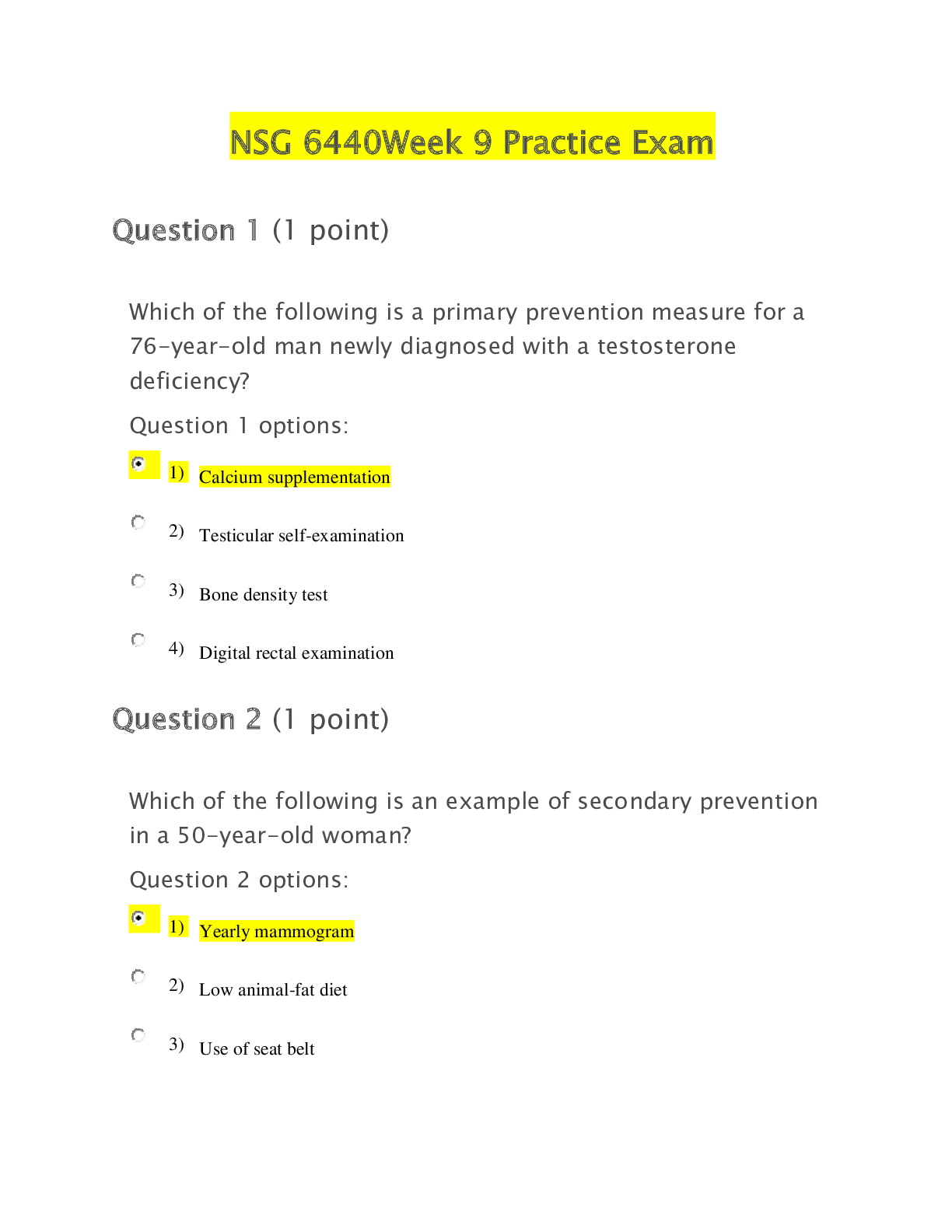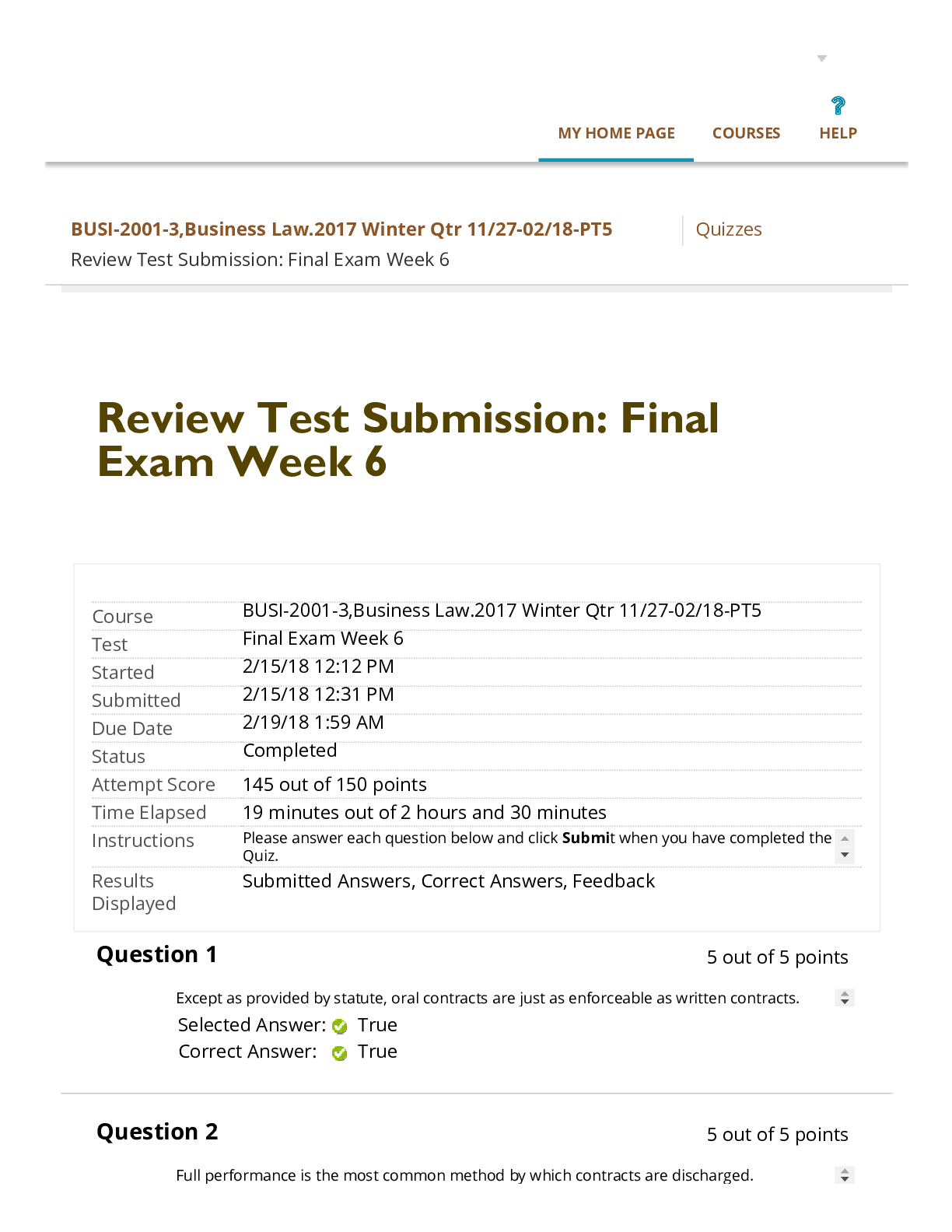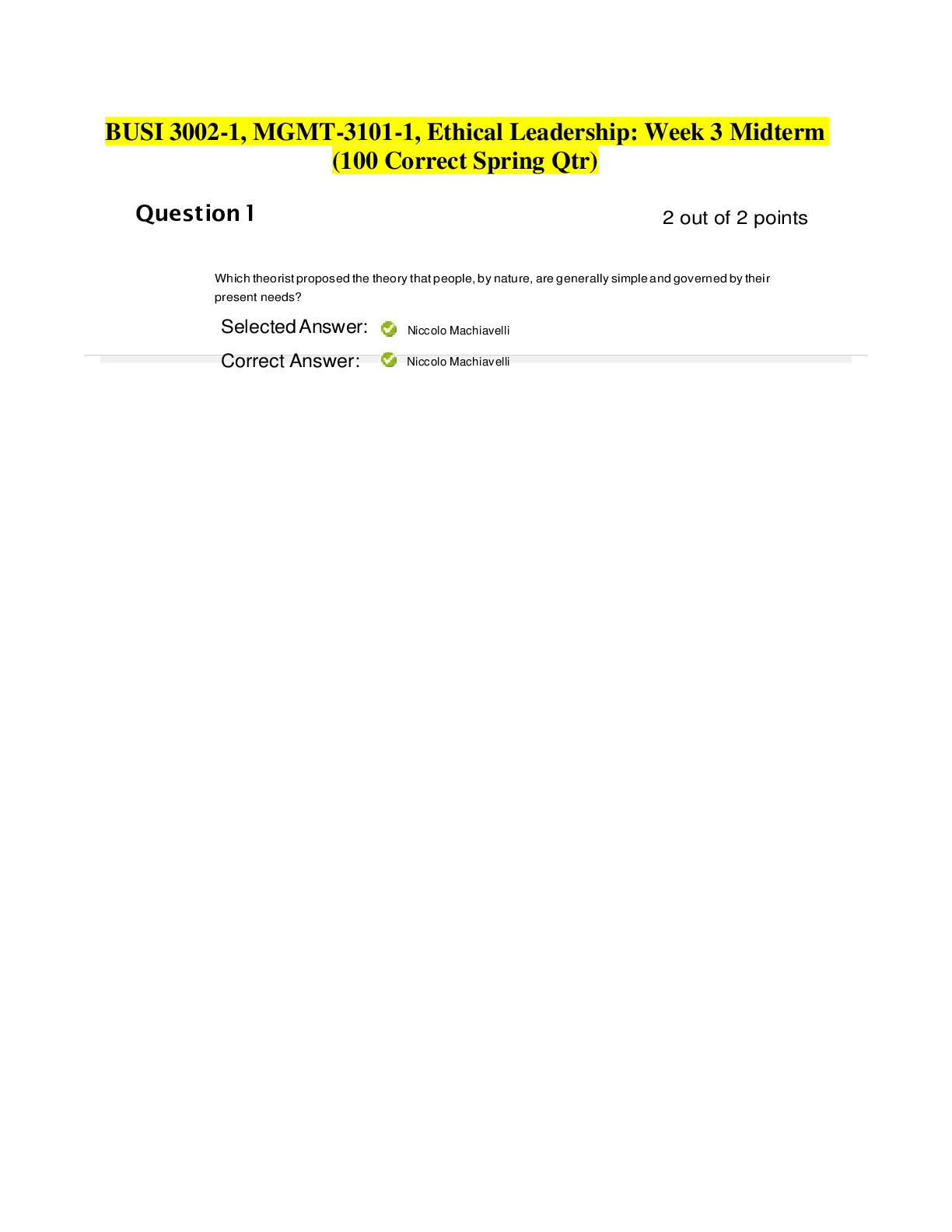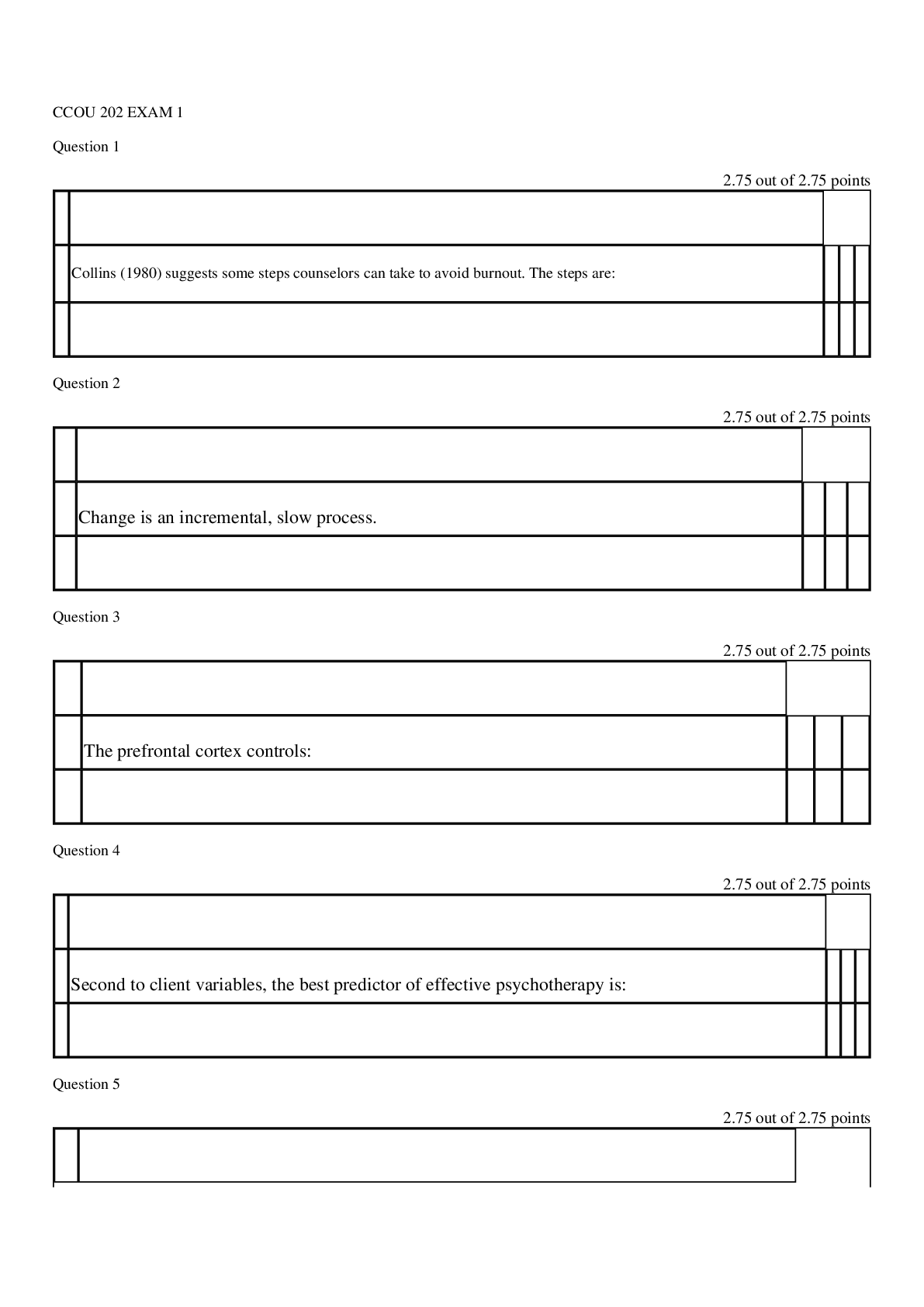Information Technology > EXAM REVIEW > ULR-3.2.1-Network Flow Models (All)
ULR-3.2.1-Network Flow Models
Document Content and Description Below
A network is an arrangement of paths connected at various points, through which one or more items move from one point to another. Everyone is familiar with such networks as highway systems, telephone ... networks, railroad systems, and television networks. For example, a railroad network consists of a number of fixed rail routes (paths) connected by terminals at various junctions of the rail routes. A network is an arrangement of paths connected at various points, through which items move. In recent years using network models has become a very popular management science technique for a couple of very important reasons. First, a network is drawn as a diagram, which literally provides a picture of the system under analysis. This enables a manager to visually interpret the system and thus enhances the manager's understanding. Second, a large number of real-life systems can be modeled as networks, which are relatively easy to conceive and construct. Networks are popular because they provide a picture of a system and because a large number of systems can be easily modeled as networks. In this and the next chapter we will look at several different types of network models. In this chapter we will present a class of network models directed at the flow of items through a system. As such, these models are referred to as network flow models. We will discuss the use of network flow models to analyze three types of problems: the shortest route problem, the minimal spanning tree problem, and the maximal flow problem. In Chapter 8 we will present the network techniques PERT and CPM, which are used extensively for project analysis. Network Components [Page 273 (continued)] Networks are illustrated as diagrams consisting of two main components: nodes and branches. Nodes represent junction pointsfor example, an intersection of several streets. Branches connect the nodes and reflect the flow from one point in the network to another. Nodes are denoted in the network diagram by circles, and branches are represented by lines connecting the nodes. Nodes typically represent localities, such as cities, intersections, or air or railroad terminals; branches are the paths connecting the nodes, such as roads connecting cities and intersections or railroad tracks or air routes connecting terminals. For example, the different railroad routes between Atlanta, Georgia, and St. Louis, Missouri, and the intermediate terminals are shown in Figure 7. ..................................................CONTINUED.............................................. [Show More]
Last updated: 1 year ago
Preview 1 out of 59 pages

Buy this document to get the full access instantly
Instant Download Access after purchase
Add to cartInstant download
We Accept:

Reviews( 0 )
$13.50
Document information
Connected school, study & course
About the document
Uploaded On
Sep 22, 2021
Number of pages
59
Written in
Additional information
This document has been written for:
Uploaded
Sep 22, 2021
Downloads
0
Views
46

.png)



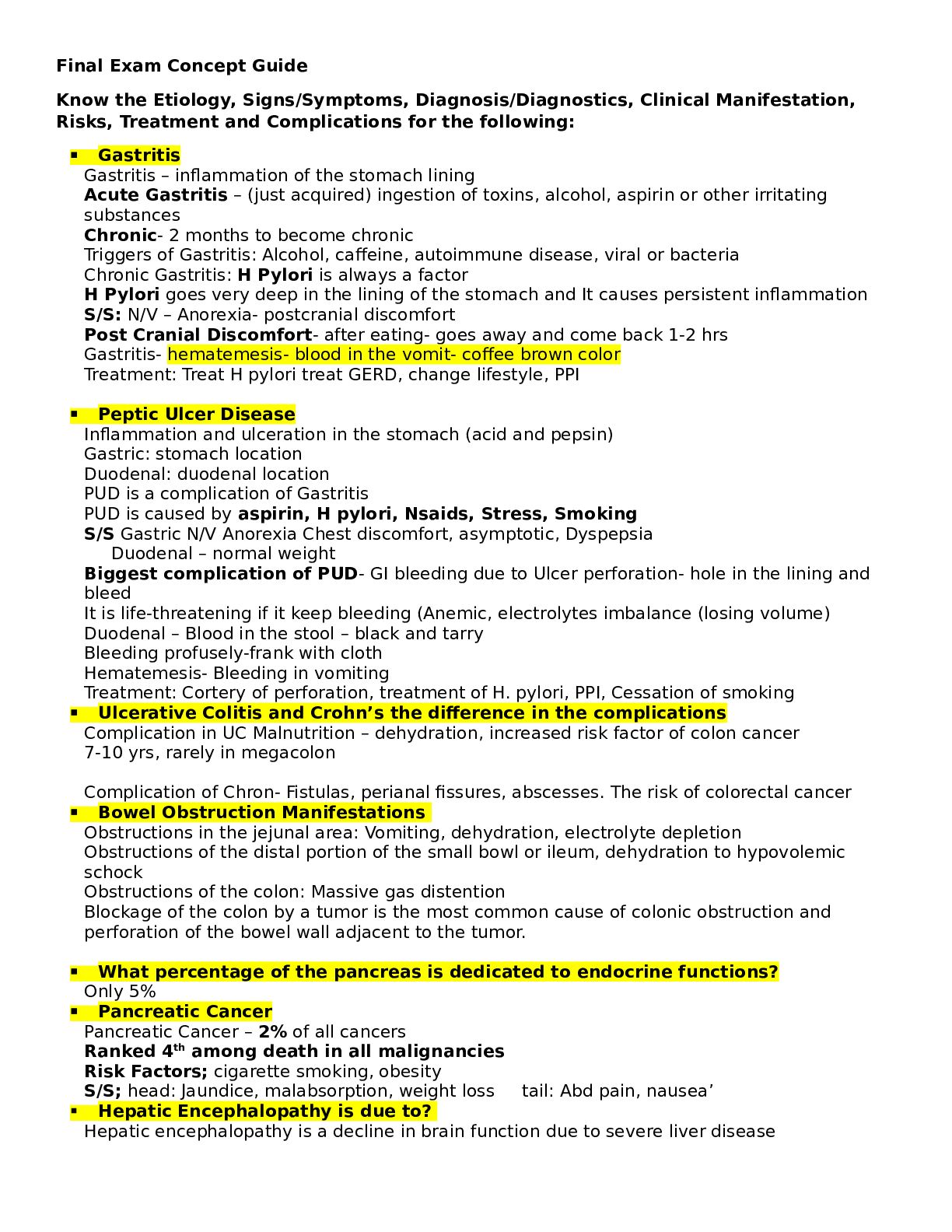



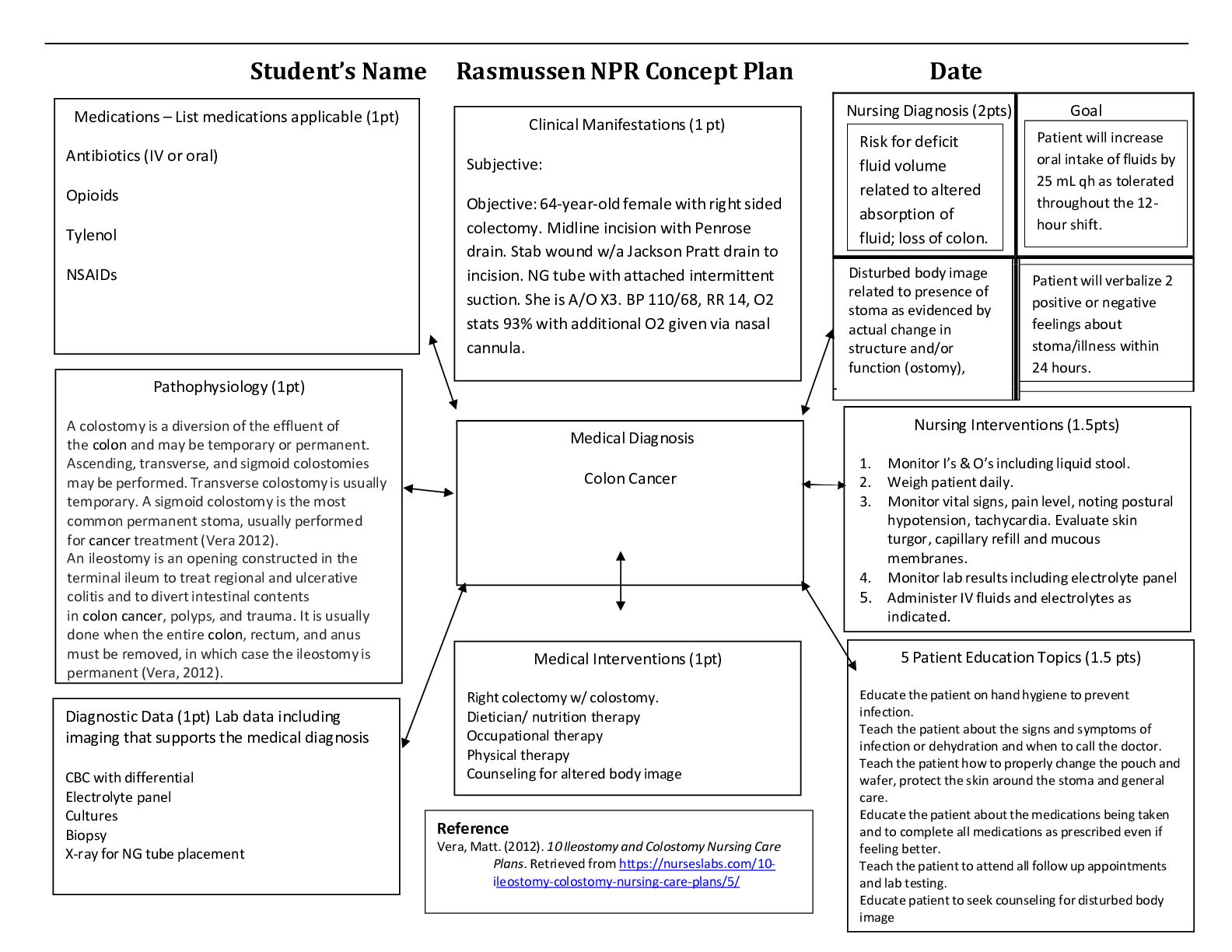
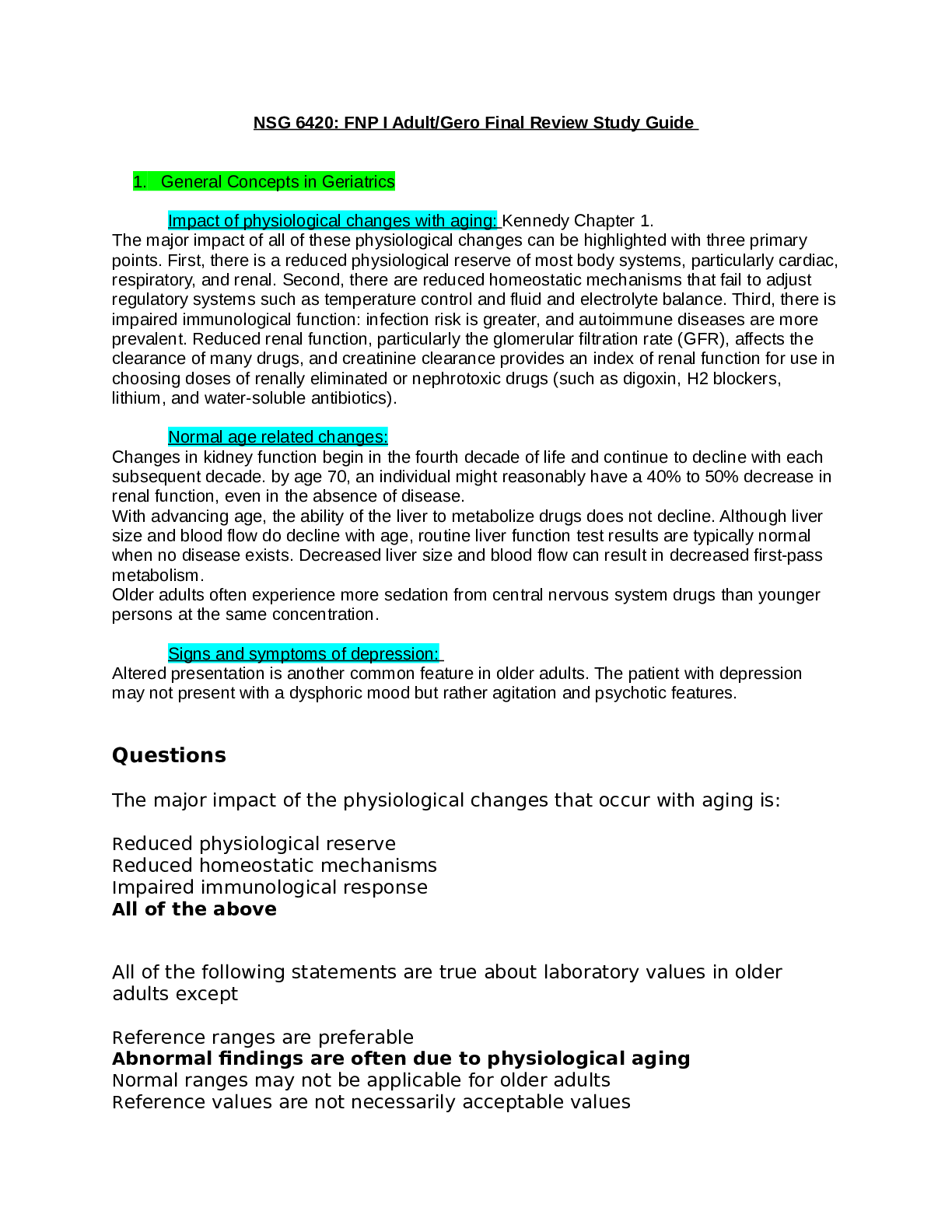

.png)
